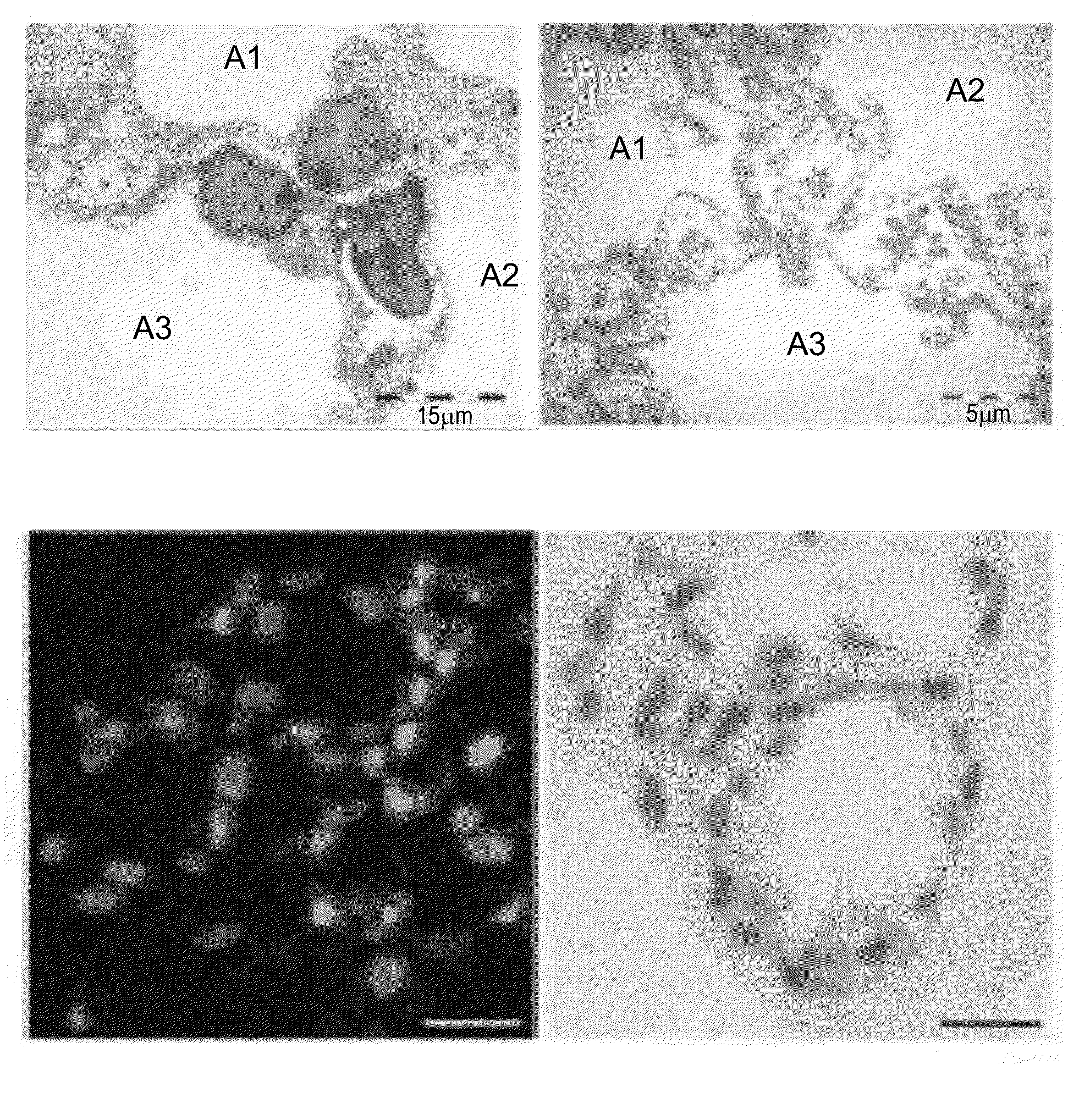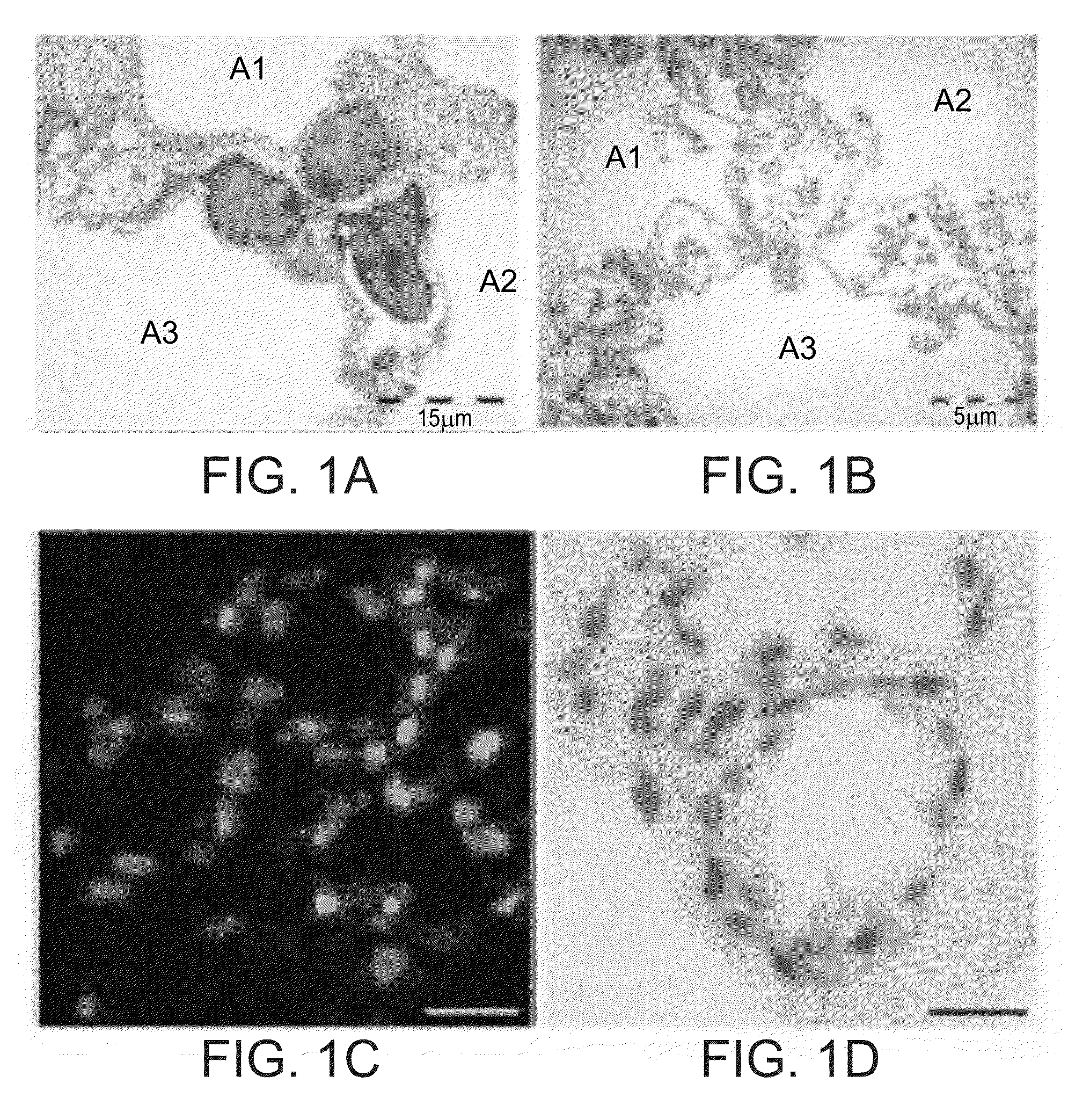Methods of generating tissue using devitalized, acellular scaffold matrices derived from micro-organs
a technology of acellular scaffold matrices and cells, applied in the field of exvivo and invivo cell culture, can solve the problems of diabetes care cost occupying an ever-increasing fraction of total healthcare expenditure, poor engraftment and paucity of available islets, and remain major limitations to widespread us
- Summary
- Abstract
- Description
- Claims
- Application Information
AI Technical Summary
Benefits of technology
Problems solved by technology
Method used
Image
Examples
examples
[0195]Reference is now made to the following examples, which together with the above descriptions illustrate some embodiments of the invention in a non limiting fashion.
[0196]Generally, the nomenclature used herein and the laboratory procedures utilized in the present invention include molecular, biochemical, microbiological and recombinant DNA techniques. Such techniques are thoroughly explained in the literature. See, for example, “Molecular Cloning: A laboratory Manual” Sambrook et al., (1989); “Current Protocols in Molecular Biology” Volumes I-III Ausubel, R. M., ed. (1994); Ausubel et al., “Current Protocols in Molecular Biology”, John Wiley and Sons, Baltimore, Md. (1989); Perbal, “A Practical Guide to Molecular Cloning”, John Wiley & Sons, New York (1988); Watson et al., “Recombinant DNA”, Scientific American Books, New York; Birren et al. (eds) “Genome Analysis: A Laboratory Manual Series”, Vols. 1-4, Cold Spring Harbor Laboratory Press, New York (1998); methodologies as set...
example i
Alveolar Structures from AII-P Lung Progenitors Grown on MOMs
[0248]AII-P Lung alveolar progenitors do not typically retain lung-specific gene expression when grown in long-term primary culture, and gradually lose the ability to express surfactant protein after several passages. The ability of devitalized, acellular micro-organ matrices (MOMs) to support growth and tissue-specific function of lung progenitors was tested by seeding primary lung progenitors on lung-derived MOMs.
[0249]When adult mouse AII-P lung progenitor cells were seeded onto lung-derived MOMs, they proliferated and organized into alveolar structures, similar to normal lung alveoli in both morphology and function. Inspection of transmission electron micrographs of normal lung tissue (FIG. 1A) compared with primary lung progenitors grown on MOMs (FIG. 1B) reveals characteristic alveolar spaces (A1-A3) separated by septal walls in both preparations. Microscopic examination of sectioned AII-P lung-progenitor-lung MOM cu...
example ii
Functional, Glucose-Responsive Islets from Islets of Langerhans Grown on Pancreas-Derived MOMs
[0252]Pancreatic islets are organized in a characteristic acinar structure, and do not typically retain islet architecture, or glucose-responsive insulin secretion when grown in long-term primary culture. The ability of devitalized, acellular micro-organ matrices (MOMs) to support growth and tissue-specific function of islets was tested by seeding isolated islets on pancreas-derived MOMs.
[0253]Islet beta cells, in contrast to the exocrine pancreatic cells, do not form a basement membrane. Instead, pancreatic islets are surrounded by a continuous peri-insular basement membrane deposited by endothelial cells that contains collagen IV and laminin, thought to promote insulin gene expression and proliferation in beta cells. Acellular, devitalized micro-organ matrices prepared from fresh pancreata of adult, C57 / b mice as described herein retain the architecture characteristic of normal pancreas t...
PUM
| Property | Measurement | Unit |
|---|---|---|
| thickness | aaaaa | aaaaa |
| thickness | aaaaa | aaaaa |
| thick | aaaaa | aaaaa |
Abstract
Description
Claims
Application Information
 Login to View More
Login to View More - R&D
- Intellectual Property
- Life Sciences
- Materials
- Tech Scout
- Unparalleled Data Quality
- Higher Quality Content
- 60% Fewer Hallucinations
Browse by: Latest US Patents, China's latest patents, Technical Efficacy Thesaurus, Application Domain, Technology Topic, Popular Technical Reports.
© 2025 PatSnap. All rights reserved.Legal|Privacy policy|Modern Slavery Act Transparency Statement|Sitemap|About US| Contact US: help@patsnap.com



